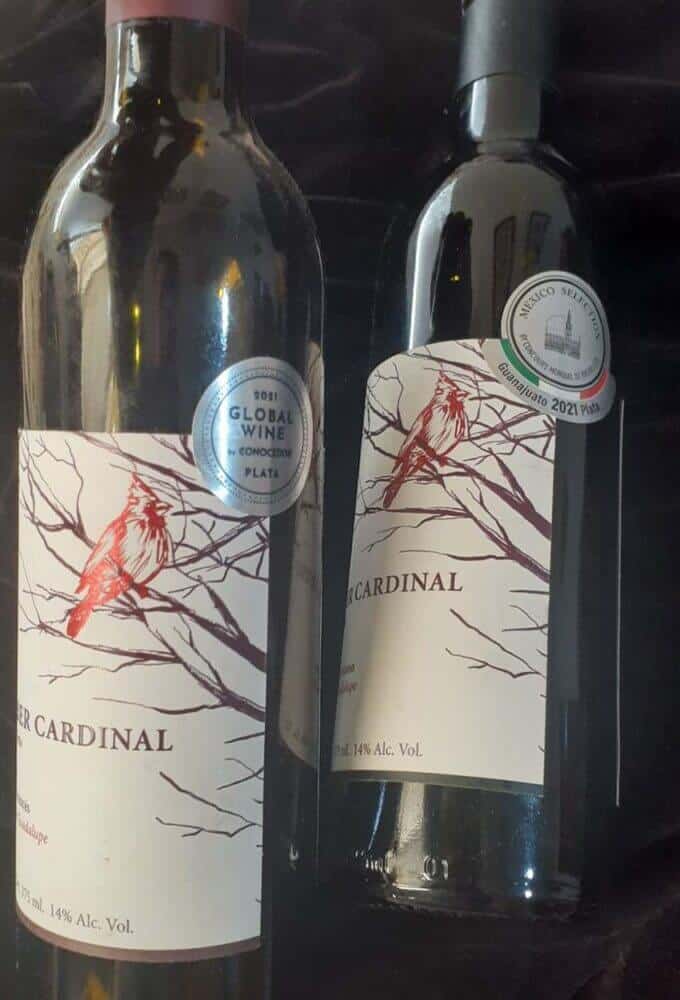Ruber Cardinal, a Mexican wine brand that began producing vintages only five years ago yet has already been awarded gold and silver medals in 2021, is producing some notable merlots. Its vintages are aged in American and French oak, making them elegant and aromatic with a soft mouthfeel.
Its Merlot Roble Francés, produced in 2017, won a gold medal at the Mexico International Wine Competition in Ensenada. Its Merlot Roble Americano and its Merlot Blend each picked up a silver medal at the Concours Mondial de Bruxelles México Selection last year.
Owners Leticia Parra and Gustavo Spindola’s commercial dream started at The Escuelita (The Little School) in Ensenada, Baja California, a winemaking school that has developed over the last few decades as a local training ground for many of Mexico’s most well-known and respected professionals. They work with Thomas Egli, a Swiss enologist, or wine scientist, who is partial to merlot grapes.
The pair has shepherded a production process that is small and thoughtful, with numbered bottles and a unique, clear concept that’s put them on the radar of boutique wine lovers.
Their two wines currently on the market, now after five years in the bottle, present a soft red, with a slightly more transparent edge. Their wine comes in 375-milliliter bottles, making it easy to try their two available varieties in a single setting.

Their first vintage was produced in 2017 when they created two different kinds of merlot – some aged in American oak and the rest in French oak, in order to determine if the organoleptic properties of the wood reflected the final product.
In 2018, the brand produced another merlot with a small percentage of cabernet franc, this time aged in French oak.
The experience of tasting the same wine from different kinds of barrels is very interesting and allows you to distinguish between the contributions of the different types of wood more clearly. It means you can observe each wine’s evolution more closely.
Ideally, you would taste both at the same time — and even better, try different years, creating a vertical tasting.
Personally, I found their wine aged in American oak more complete, with hints of pepper, clove, cinnamon, dark fruit and tobacco. The mouthfeel was silky, but the wine’s structure made me think it would be good with grilled meats, pasta with red sauce, semi-aged cheese and subtle spiced pork. Even tacos al pastor would be good with this wine!
The vintage aged in French oak was more ephemeral, delicate in the nose and mouth, with subtle aromas of red fruit, wood, soft caramel and toffee. Soft cheeses, spiced goat cheese, prosciutto and red fruit, mole de olla or Tampico-style beef would all go well with this wine.
This first vintage still has a couple more years of good expression in it, so we’ll save some of the 2017 bottles for a few years to come. We’ll also await the next vintage. Tasting and recording is ideal, and that’s what makes a good wine taster.
- To buy Ruber Cardinal wines, visit their online store or other Mexican online wine sites such as Top Vinium and Vid Mexicana. You can also buy it in person in Mexico City at La Contra Vinos wine shop, and it’s served at the Concours Mondial de Bruxelles Wine Bar and the SI MON wine bar.
Sommelier Diana Serratos writes from Mexico City.
